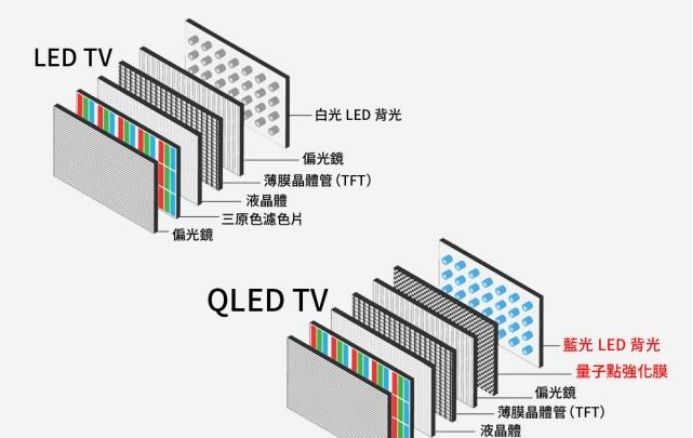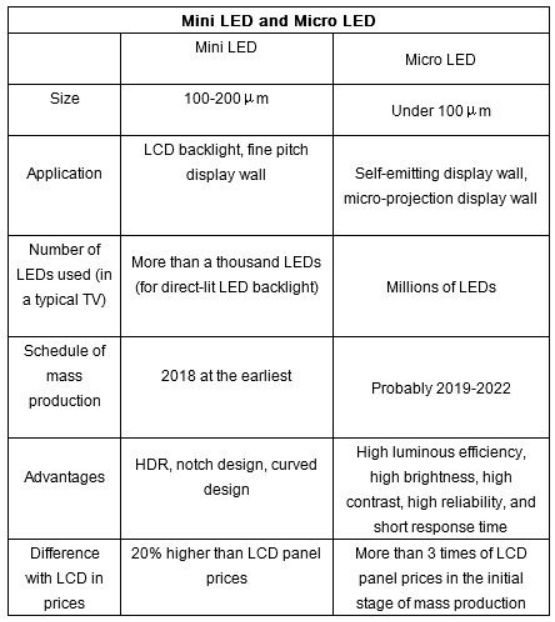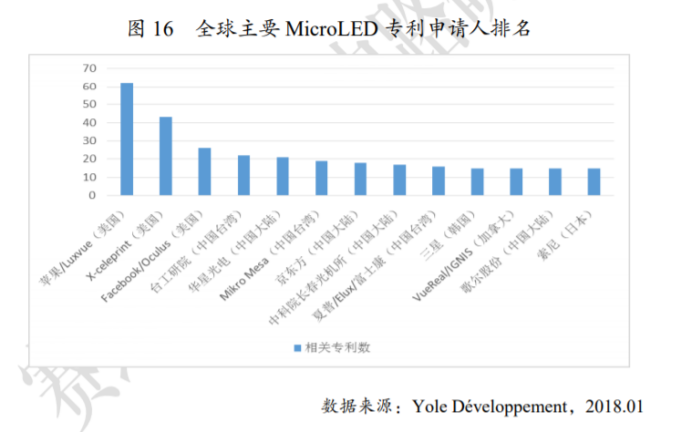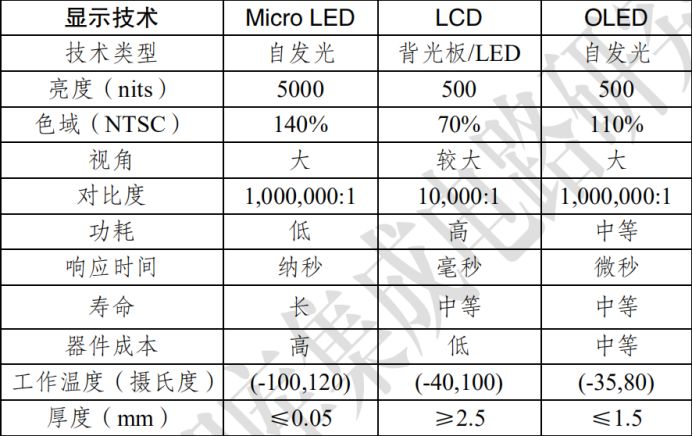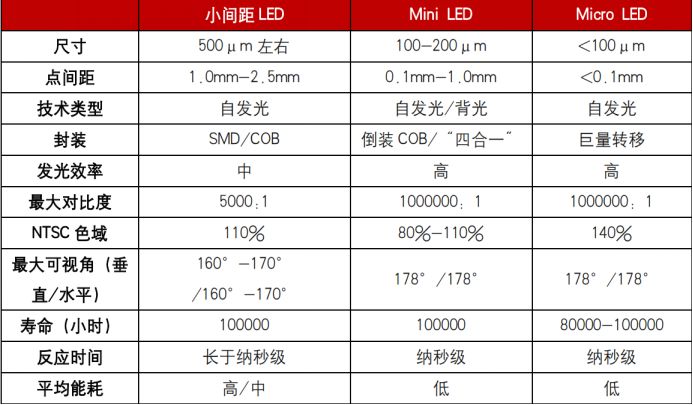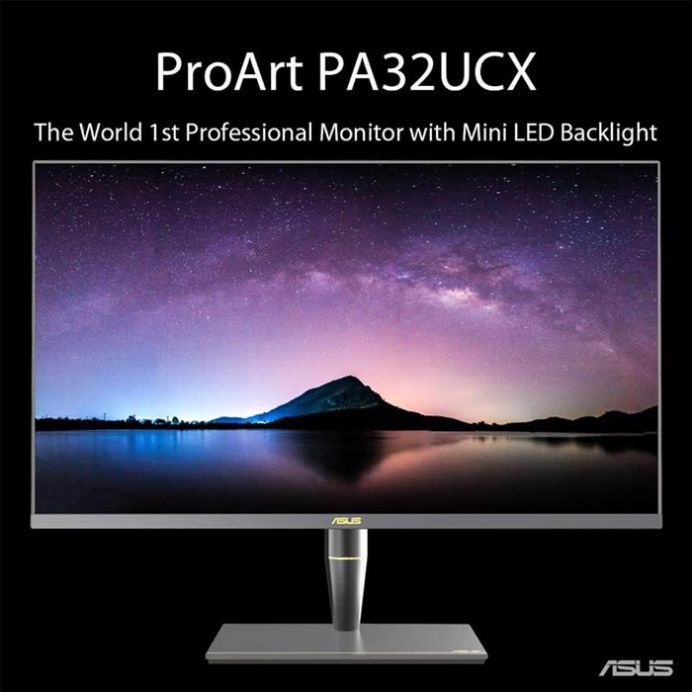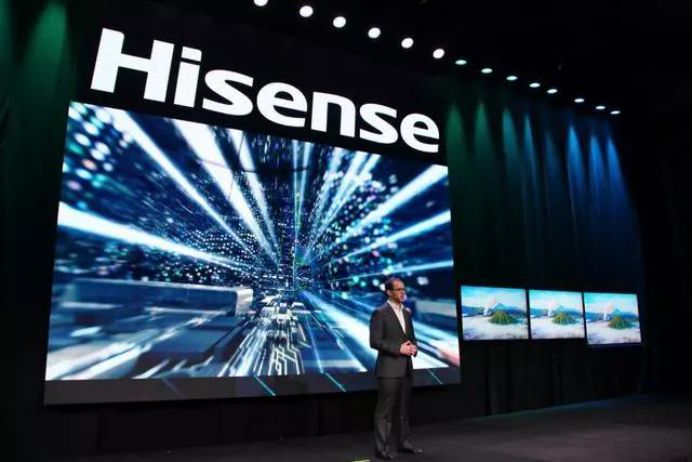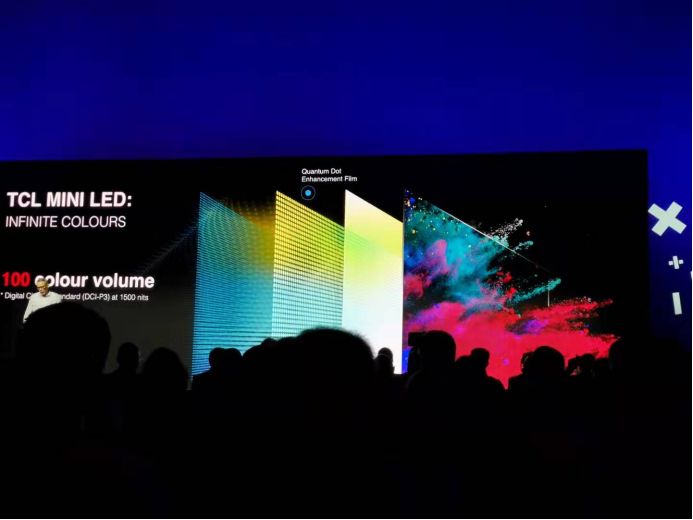What is special about this new type of screen that sounds a bit strange? Why did Apple choose it?
Editor’s note: This article is from WeChat public account “Ray Technology” (ID: leitech). Original title: “Is the iPad and MacBook screen to be replaced with a Mini LED? ! WTF? 》
Recently, the famous Apple analyst Guo Mingxi released a research report that Apple will use the Mini LED screen on next year’s equipment. According to the report, Apple will launch the iPad and MacBook with Mini LED display respectively during Q1-2021 Q1 and 2021 Q1-2 in 2020.
What’s special about this new type of screen that sounds a bit strange? Why did Apple choose it?
What exactly is the Mini LED?
At present, there are mainly different types of displays such as LCD, QLED, OLED, Mini LED, and Micro LED on the market. It is difficult for ordinary people to clearly distinguish the difference between these displays. Those displays that are also “LED”, The essence is not the same.
LCDs and OLEDs are familiar to many people. The biggest difference between them is the luminescence technology. In simple terms, LCD screens need to be backlit through the liquid crystal, depending on the optical properties of the liquid crystal. , converted to visual image changes. The pixels of the OLED screen can be self-illuminated, and the rich images are formed according to the different illumination of the pixels.
QLED, the quantum dot display, actually belongs to the LCD, that is, the liquid crystal display, but its backlight is emitted by quantum dots, but the display effect is much better than that of the ordinary LCD. Currently, it is mainly used for television. In recent years, under the strong propaganda of Samsung and other TV manufacturers, more and more attention has been paid.
Mini LED and Micro LED As the name implies, two screens are divided according to the size of the LED unit. They are much smaller than the traditional LED. The unit of the Micro LED is less than 100 microns, and the unit of the Mini LED is between the traditional LED. Between the Micro LED and the Micro LED, it is in the range of 100-200 microns.
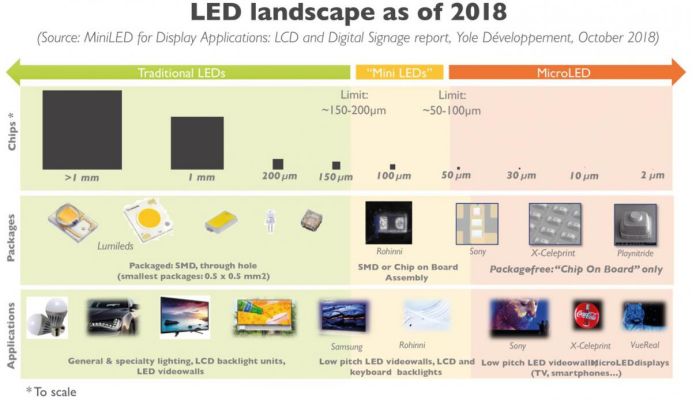
(Source: LEDinside)
Why did Apple choose the Mini LED?
First of all, for Apple, Mini LED is an affordable option for high-end products.
Apple’s initial layout was actually Micro LED. As early as 2014, Apple acquired LuxVue Technology, a startup company that studies display technology and has several patented Micro LED technologies. Moreover, in the related patent technology of Micro LED, Apple has always had a small advantage. According to the data compiled by CCID think tanks, Apple’s patents ranked first among related companies by 2018.
The advantages of Micro LEDs are obvious compared to LCD and OLED screens. Structurally, the conventional LED itself does not emit light and requires a backlight module, so the volume is relatively large, and it is difficult to make it thinner. OLEDs can self-illuminate, which can avoid the defects of traditional LED backlight modules. However, due to the special organic materials, the packaging is more difficult. Micro LEDs use inorganic self-illumination technology, which avoids the drawbacks of traditional LCDs and does not have to worry about material problems like OLEDs.
Show up, Micro LEDs can self-illuminate, consume less power, and, in terms of brightness, contrast, color gamut coverage, and viewing angle, < Strong>Excellent than LCD and OLED, and,Working environment requirements and service life are also superior to both.
.
(quoted from Sadie Think Tank)
However, at this stage, the Micro LED is difficult to mass produce.First of all, there is a threshold for huge transfer technology. The huge transfer is to transfer millions of micron-sized Micro LEDs to the display panel. Due to the small size and quantity, the precision of the technology is relatively high. . Moreover, since the related packaging technology and LCD are not the same, the cost of opening up the production line is relatively high.
In comparison, Mini LED packaging technology is compatible with most existing devices, no need for complicated technology like Micro LED, the cost will be A lot less. However, Mini LEDs are much better than LCDs and OLEDs in terms of display brightness, contrast, gamut coverage, etc., and their lifetime is longer than both,< Span> can be used as a high-end screen.
So, for Apple, although it has been in the field of Micro LED for a long time, there are more patented technologies than other manufacturers, but limited by cost, choose Mini LED as The screen of high-end products costs only 20% higher than LCD, and the overall quality is better. It is obviously an affordable high-end option. Moreover, as a transition to Micro LED, Mini LED also leaves more preparation time.
Secondly, this is also a way to reduce reliance on Samsung products.
At present, Apple’s high-end products use AMOLED screens. In the AMOLED screen production technology, Samsung is in an absolute dominance, and other manufacturers’ AMOLED screens are difficult to reach Samsung’s level. This means that Apple is completely subject to Samsung, but Samsung’s mobile phone business is also doing very well, on the side of the couch, Samsung Grace Apple sleeps. Once there is a problem with the relationship, Apple’s mobile phone production will inevitably be affected.
Apple naturally needs to consider this issue. Some time ago, Guo Mingxi spent on the report, and Apple will upgrade the OLED screen produced by LG.The proportion will be introduced to the Chinese manufacturer BOE as an additional supplier. Now, Apple’s new Mini LED screen should also diversify its supply chain and reduce its dependence on Samsung.
Third, Apple’s fuss on the screen should also be an attempt at innovation.
Apple’s ability to innovate is declining. Once used as an industry benchmark, the various technologies and designs used by the iPhone will be imitated by Android manufacturers. But in recent years, this kind of follow-up has become less and less, and many advanced technologies are the first to be used by Android. Apple needs some innovation, and Mini LED is an option.
What impact does Apple have with Mini LED?
Apple has always had the power to lead the industry. Since the birth of the iPhone, other mobile phone manufacturers have more or less imitated Apple. In recent years, fingerprint recognition, special-shaped screen and other designs have been simulated by other manufacturers. If Apple uses the new Mini LED on its next product, it is likely to trigger a wave of trends, and more and more mobile phone manufacturers and display manufacturers may choose Mini LED. Moreover, this trend is likely to erupt in a short time.
In fact, the display using Mini LED has already appeared on the market. At this year’s CES 2019 exhibition, companies such as Asus and Hisense exhibited Mini LED products.
ASUS exhibited a professional-grade display, the ProArt PA32UCX, which uses a 10bit 4K resolution panel with a peak brightness of up to 1200 nits. At the same time, this display also reaches 97% of DCI-P3. Gamut coverage, 89% of Rec. 2020 gamut coverage. This monitor uses the Mini LED and is the world’s first consumer-grade display of this type.
Hisense also introduced a 145-inch Mini LED TV. With a pixel pitch of 0.833mm, the energy efficiency is 30% higher than that of a normal LED display due to the skill technology.
At this year’s IFA show, TCL presented Mini LED products for the first time. The number of LEDs in the backlight can exceed 25,000, and the maximum brightness of 1000 nits can be achieved. . In addition, it can adjust the brightness of each LED separately by uniform light control technology, so that the TV display content is brighter and the dark field is darker, achieving better display effect.
Apple also released products using Mini LEDs. At this year’s WWDC 2019, Apple exhibited a 32-inch Retina 6K display Pro Display XDR. The display achieves an amazing 6K resolution with a maximum brightness of 1000nits, a P3 wide color gamut overlay and a contrast ratio of up to 1000000:1.
You can see,The products that use Mini LEDs are not far from popular, but they are currently stuck in monitors and TVs. Screen application. If Apple uses Mini LEDs on smaller iPads and MacBooks, the possibility of mass production of related small screen products will be great. Moreover, the realization of consumer-grade mass production on the big screen now means that the related technology of Mini LED has matured, and it will not be too difficult to smoothly transfer to small-screen devices.
Apple’s use of the Mini LED on the new iPad and MacBook is a new high-end attempt. If this is more explored, perhaps “innovation” will not become a consumer joke. Of course, for consumers, it is also possible to get a better visual experience at a lower cost. In particular, when the technology is used on a large scale, this better experience will cost less.

